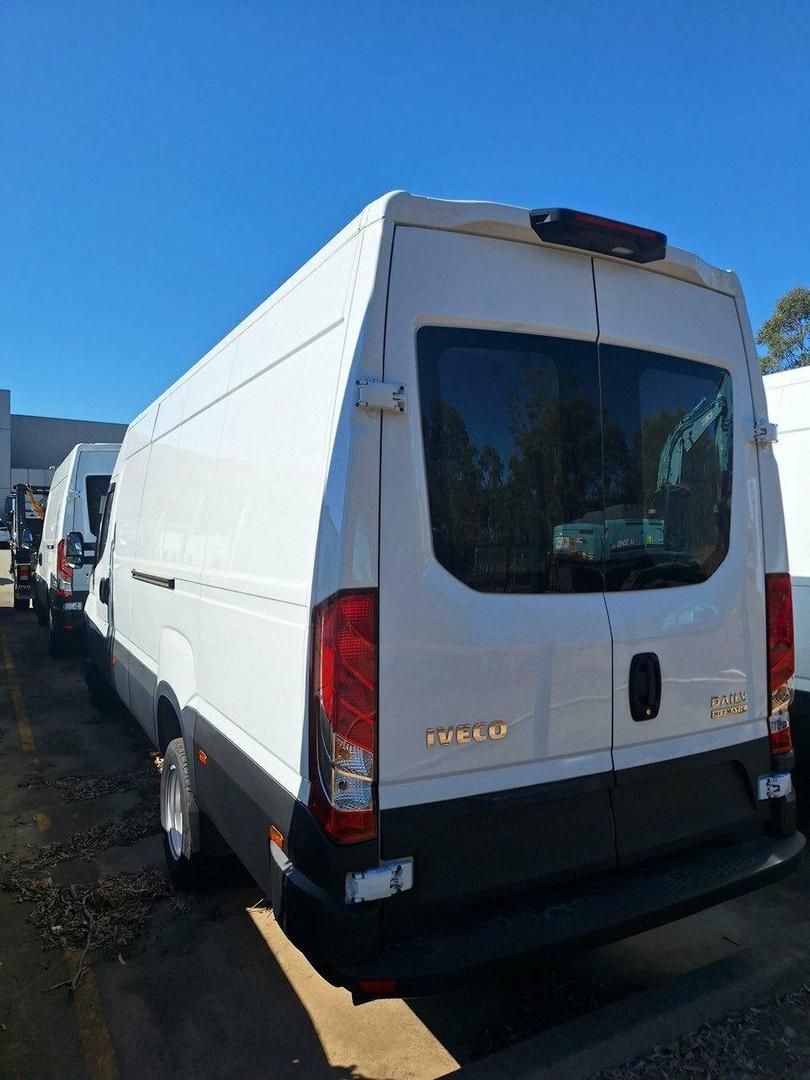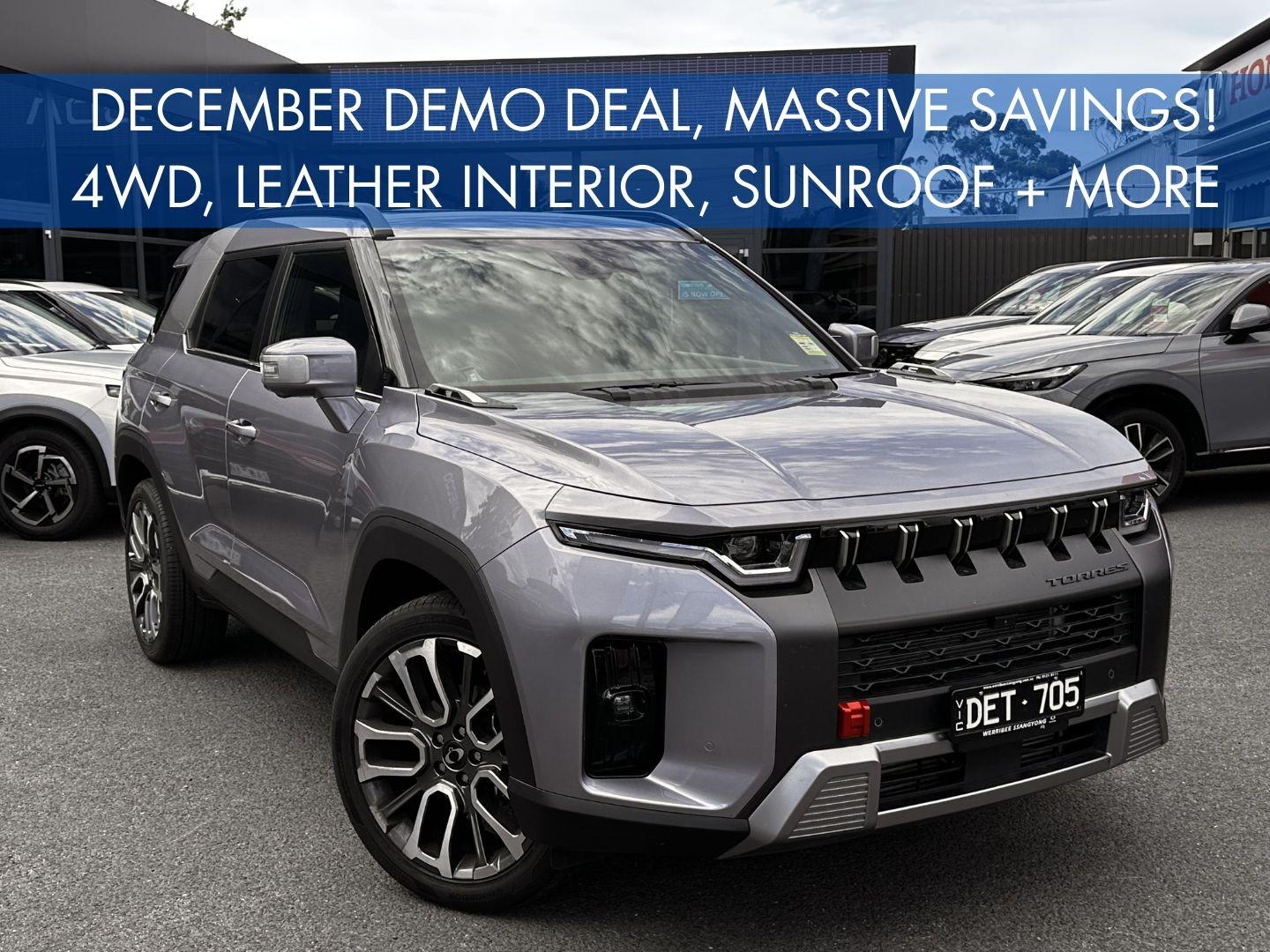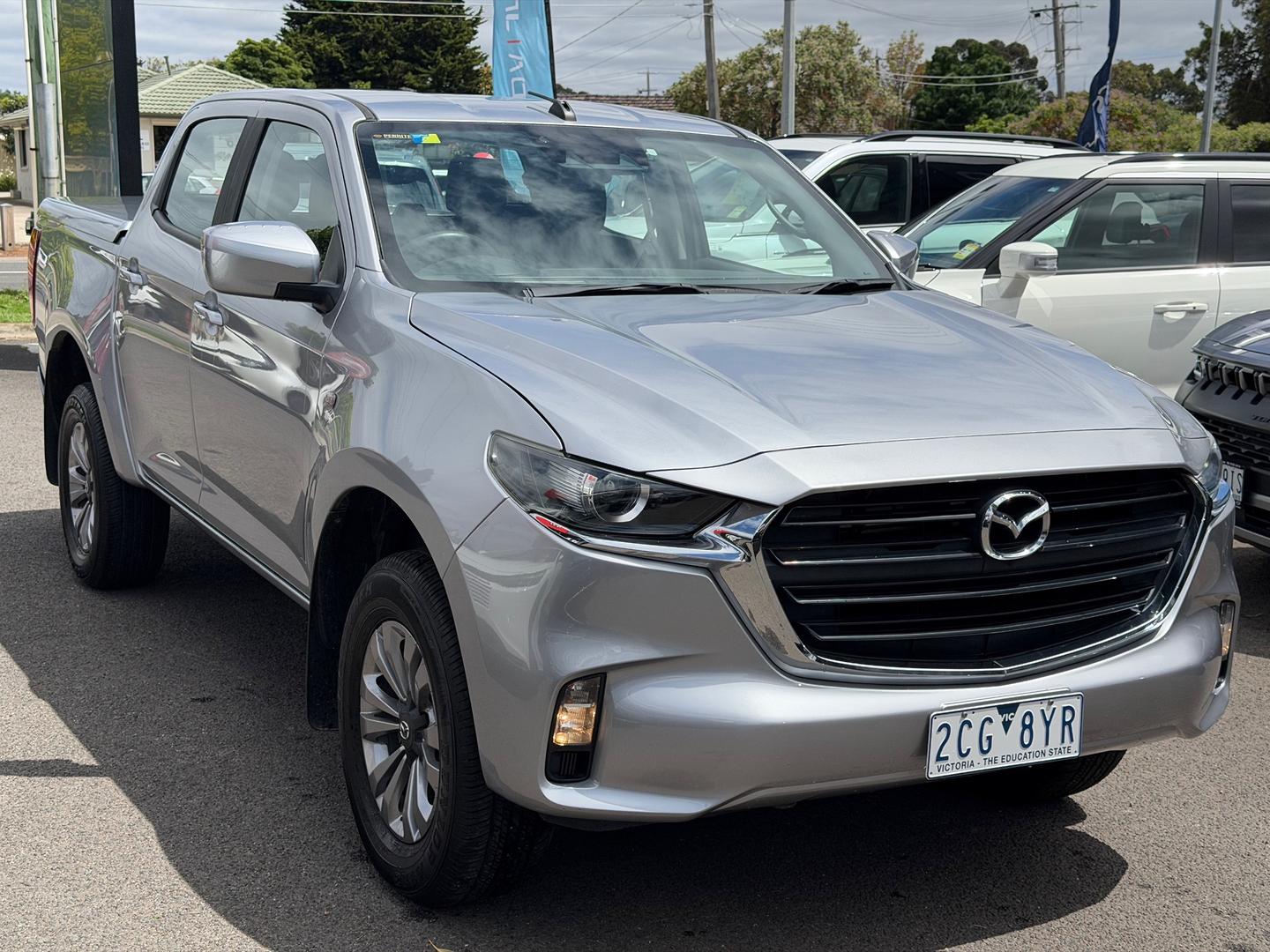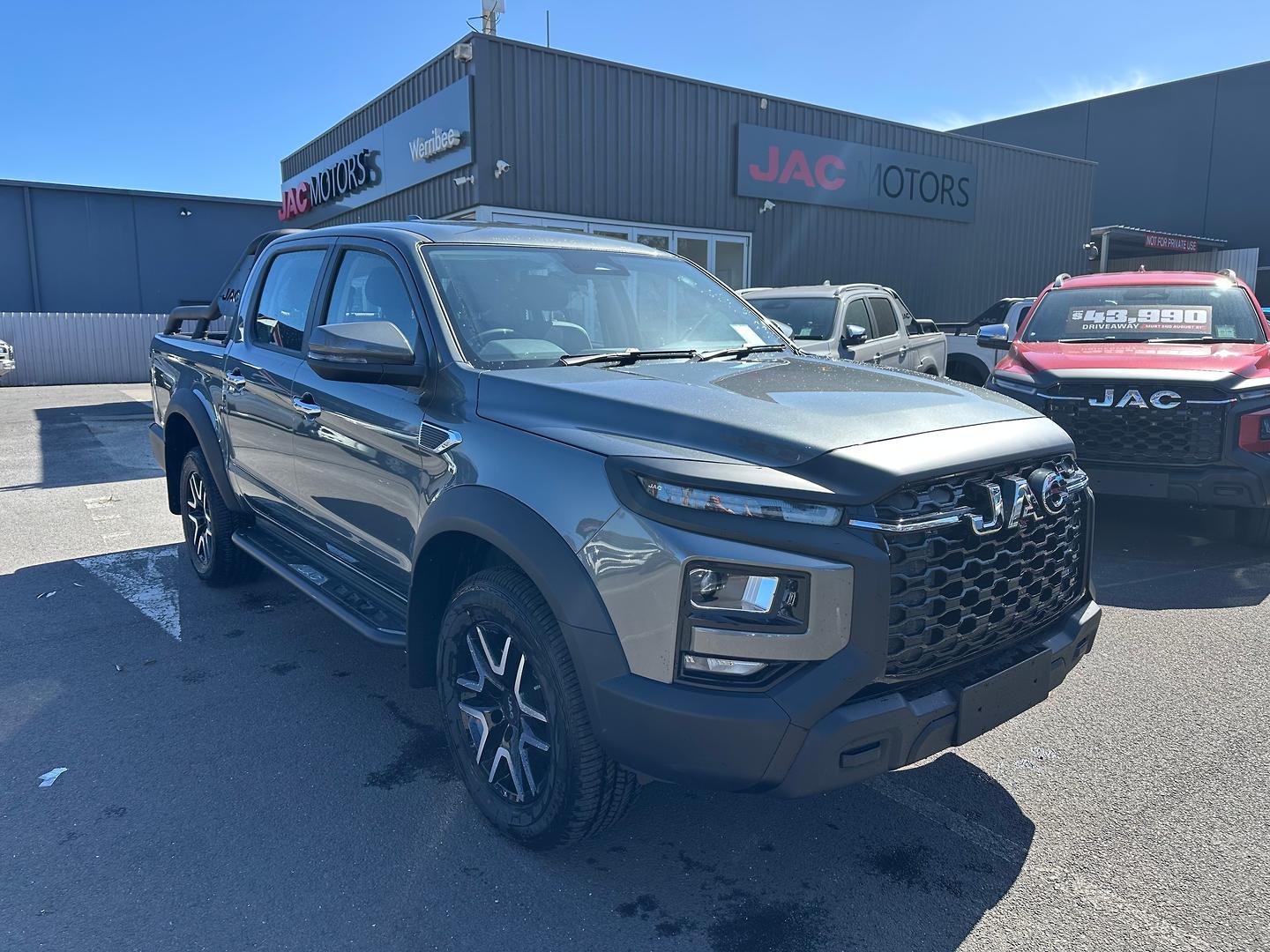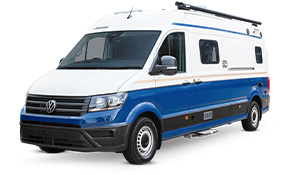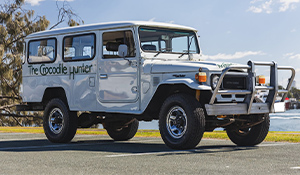Ford's new work and play Ranger
The one-tonne utility market isn't only about workhorse models, with buyers increasingly looking at the top spec models to provide a dual work and play role. After 23 years Ford have ditched the Courier brand and replaced it with the global Ranger name for its light commercial utility models. With the upper echelons of the Ford truck market filled by the F-250 and F-350 models, it seemed that the logical choice to fill the middleweight sector would have been the F-150 range. According to Ford Australian President Tom Gorman, the F-150 would have fitted the family DNA admirably, but despite its phenomenal success in the USA, the F-150 is not manufactured in right-hand drive variants anywhere. Ford have quietly been revitalising their truck range, with upgraded Falcon ute cab chassis, a new Transit van and now a new Ranger light commercial range. According to Ford, Ranger will capitalise on the growth of the segment, especially at the top end of the market and fulfil the dual purpose requirement of buyers.
After a day driving the new Ranger it is hard to argue with this strategy. While in many respects there wasn't anything massively wrong with the Courier, the Ranger is a far superior vehicle in all aspects. While retaining a genuine one-tonne capacity, it is far more refined, has car-like fit-out, and rides, handles and drives in superior fashion. "The new Ranger is more powerful compared with Courier, offers improved functionality, significantly increased three-tonne towing ability (3.0-litre manual model) and maintains a one-tonne plus payload across the range. New Ranger features a more aggressive and bolder look, a modern car-like interior, two new common-rail turbo-diesel engines featuring direct injection, improved ride and handling and significantly higher towing capacity",?Mr Gorman said. In perhaps what is a major departure from standard practice, Ford will not be offering the Ranger with a petrol engine. Ford is so confident that buyers will love the turbo-diesel engine that no petrol variants are offered.
Model Range
The Ranger is offered in 13 model variants in 4x2 and 4x4 mode and is poised to take on the market leaders in Toyota HiLux and Holden Rodeo. Ranger is offered with the choice of two efficient common rail turbo-diesel engines - a 2.5-litre unit on entry level 4x2 models and a 3.0-litre version for all other models. As mentioned, there are no petrol variants, partly because the 3.0-litre diesel engine is considerd (by Ford) as a better unit, and when mated to the five-speed transmission provides an excellent mix. A new 5-speed manual transmission is standard across the board, with a new 5-speed automatic available for all 3.0-litre models.
Powerplants
The new Ranger line-up is powered by two new twin-cam turbo-diesel engines featuring common-rail direct fuel injection. The 16-valve 2.5-litre and 3.0-litre four-cylinder Duratorq engines are quiet and offer greater performance, improved fuel economy and lower emissions. A variable geometry turbocharger has significantly reduced turbo lag, broadens the torque curve and promotes smoother and faster acceleration. Greater power and performance are achieved by the fuel being injected directly into the combustion chamber multiple times per cycle under extremely high pressure (1600 bar) from a common- rail pump. The technology ensures the best possible mixture of fuel and air in the cylinders, resulting in efficient combustion for high torque and excellent fuel economy while also reducing engine noise and vibration. Combined with a variable geometry turbocharger that reduces turbo lag, the system increases power and torque across the driving range, ideal for powerful acceleration and towing.
The new 2.5-litre engine delivers max-imum power of 105kW at 3500rpm and 330Nm of torque at 1800rpm. When compared with the previous Courier model's 2.5-litre diesel, torque is up 22% at 200 fewer revs and fuel economy has improved 14.4% in the new 2.5-litre engine. Even more impressive is the 3.0-litre engine, which produces 380Nm of torque at 1800rpm and 115kW of power at 3200rpm. The new 3.0-litre turbo-diesel power-plant could be matched to either a five-speed manual or an optional five-speed automatic transmission. An added appeal of the new 3.0-litre turbo-diesel manual transmission model is the ability to tow up to 3.0 tonnes (when fitted with a genuine Ford towpack and load leveling kit), up from 1800kg on Courier.
The key technologies involved in these engines are:
High-pressure common-rail fuel injection - up to 1600 bar for optimum injection pressures during all engine speeds and loads with improved power, torque, fuel efficiency, emissions, noise and vibration.
Direct Injection - injects fuel directly in the combustion chamber to provide more efficient combustion, more power and torque, better fuel efficiency and cleaner emissions.
Double overhead camshafts with four valves per cylinder - high-lift valves significantly increase air intake, improve intake/exhaust efficiency and boost power and torque output.
Variable geometry turbocharger (VGT) - the design virtually eliminates turbo lag and broadens the torque curve for rapid engine response.
Closed-loop exhaust gas recirculation (EGR) with cooler - reduces emissions.
High-output microprocessor - provides sophisticated control of engine variables under all driving and climatic conditions.
The engine program control module (PCM) now has a self-diagnostic function.
Intake manifold with swirl control valve - delivers improved efficiency and reduced harmful emissions.
Roller finger follower - reduces camshaft friction for improved fuel economy.
Dual counter-rotating balance shafts - for reduced engine vibrations.
High torque and superior performance in all driving conditions were the keys to development of the new TDCi engines. Chief Platform Engineer Mark Bill said the engine technology was developed specifically to enhance the high-torque characteristics. "It's torque that provides the grunt to move a truck," Bill said. "These engines develop high torque and provide it right across the rev range, resulting in improved engine and towing performance compared with Courier."
At the same time as producing substantially more power, the new 2.5-litre engine is more fuel efficient and cleaner burning than the 2.5-litre turbo-diesel engine in the previous Courier model. It delivers 14.4 percent better fuel economy and achieves an impressive fuel-consumption rate of just 8.3 litres/100km in a 4x2 Single Cab. Despite its bigger capacity and associated increase in performance, the fuel efficiency of the 3.0-litre engine (with manual transmission) is even more amazing with fuel economy 8.9 percent better than the previous Courier's 2.5-litre engine.
Transmission
Manual transmission
Given the torque of the new TDCi engines, Ford's new five-speed manual transmission now comes with a dual mass flywheel, triple cone synchronisers and other enhancements to improve vehicle refinement. Designed with the customer in mind, it has a more car-like feel with a shorter lever and reduced throw between gears. The dual mass flywheel has separated primary and secondary flywheels and a damper spring located inside the flywheel. This structure stabilises rotation of the transmission primary shaft, reducing noise created by fluctuating engine speeds. A triple, rather than double-cone, synchroniser increases the friction surface area, reducing the force and meshing time for operating the manual transmission.
Transfer case
Manual transmission vehicles use a two-speed manual shift transfer case. In normal on-road driving, torque is directed solely to the rear wheels, saving fuel and reducing wear on driveline components. In 4x2 mode, the remote free-wheel front axle can be disengaged via a switch on the instrument panel, allowing the front wheels to rotate freely. The effect is similar to unlocking wheel hubs. For off-road or low traction conditions, the driver can select 4x4 high, which directs torque to both the front and rear wheels. The front axle is locked into drive from the cabin without the driver having to leave the vehicle. For really rugged conditions, the driver can also select low-range 4x4 for the best traction performance. A mechanical, multi-plate, torque sensing limited slip differential (LSD) apportions torque between the left and right sides of the vehicle. During cornering, the driving force is transmitted efficiently to the side with most traction, maintaining optimum torque balance.
The result is a vehicle that offers better drivability and handling, particularly during high-speed cornering. five-speed automatic transmission Ranger also features an impressive all new five-speed automatic transmission, available as an option across select 4x2 and 4x4 models fitted with the 3.0-litre powertrain. The electronically controlled five-speed automatic transmission has closely spaced ratios that keep the engine in its power band to produce better acceleration under full throttle. Its wide overall ratio provides a unique combination of off-the-line jump and remarkably good highway fuel economy. The powerful 32-bit PCM delivers benefits in the transmission, as well as the engine, by precisely controlling shift duration and shift timing. Throttle position, engine speed, load, environmental factors and other parameters guide the transmission shift schedule.
An electronic interface complements the added capability of the PCM, allowing it high speed communication with the automatic transmission, and giving powertrain engineers the ability to match controls with other sophisticated features such as electronic throttle control. As a result, the entire powertrain works together to deliver smooth performance. Other measures taken to greatly improve the quietness of the transmission include adopting the dual-mass flywheel, increasing rigidity of the transmission case and optimising rib placement. Electronic shift-on-fly mechanism creates an easier 4x4 operation. This means the driver does not have to stop the vehicle to switch between two-wheel drive and four-wheel drive.
Body and cabin
Ranger has a modern and purposeful body with prominent wheel arches, higher beltline and taller cargo box. The front end has a wide grille, wider front track, hood bump and dual headlights. At the rear, the side-wall of the cargo box is 60mm higher than the previous Courier model (405mm up to 465mm), boosting storage to 1266 litres on single cab pick-up models. Ranger's side view has also been beefed up with a higher beltline giving it more strength and substance. As well as adding to Ranger's rugged appeal, the redesigned body side is sleeker, more aerodynamic and modernised with a cleaner, simplified look. The revised beltline has been raised and angled so that the side creates a modern, wedge-shaped profile. It is 17mm higher at the front, 25mm higher in the B-pillar area and 35mm higher at the rear of the cabin than the superseded model. The sheet metal flows seamlessly into the side walls of the pickup box, which has been raised 60mm for greater storage volume and a more solid look.Further adding to Ranger's 'tough truck' presence are dominant fenders - a highly visible design cue that emphasises off-road ability and enhances the muscular presence of the truck. The fenders are more than cosmetic, they also protect the body.
New open grip door handles add to the solid appearance and are easier to use, even when wearing work gloves. The solid looking door handles are complemented by larger chrome over black outside mirrors on XLT models that provide a commanding view of the road and fold in for tight clearance areas. The rear of new Ranger is stable and strong, dominated by the new pick-up box with taller sidewalls and tailgate for a tougher appearance and greater functionality. Capacity of the box on single cab pick-up models has been increased by 166 litres to 1,266 litres, providing ample space for large items and a genuine one-tonne payload. Ford Ranger is available in body styles including Single Cab, Super Cab (incorporating the innovative Rear Access System) and Crew Cab. All models are available in cab chassis and pick-up box configurations. The Super Cab features two forward-opening front doors and two access panels that open towards the rear, creating the largest possible opening to the cabin. This system provides excellent access for occupants and for stowing large, awkward cargo.
Interior
Gone are the bad old days when utes were spartan and downright uncomfortable. The cabin is very ‘car-like' and this impression is only enhanced after driving. It is well equipped and instruments all fall easily to hand and eye. There is good head and shoulder room and seats offer good support. The dash is modern and understated with various shades of grey, complemented with metallic finish centre stack that houses ventilation controls and audio system. There are plenty of storage options with dash top tray, glovebox, centre console and bins inside front doors. The instrument cluster features three intersecting pods. The speedometer is placed centrally, the tachometer to the left and the fuel and temperature gauges grouped to the right. As with instrument controls, the manual transmission lever is now more car-like and easier to operate, thanks to shorter and more precise throws that make changing gears quicker and easier. Seats are very good, and in the Super Cab cushions are provided on the bench behind the front seats, for emergencies when kids may be transported.
This area is really unsuitable to be considered for transporting passengers, being an ideal storage area for tools or other storable luggage. In the Crew Cab the back seats offer a greater rake than the previous Courier, but are still uncomfortable and offer minimal legroom. Standard equipment is good with two trim levels offered - XL?and XLT. Standard gear in 4x4 Super Cabs include tilt adjust steering column, air conditioning, driver's left footrest, 12 volt plug, lockable glovebox, centre console, passenger grab handles, headrests, digital clock, radio and single CD with MP3 compatibility. XLT models gain power mirrors, leather steering wheel, power windows and 6-stack in-dash CD. The only obvious omissions being cruise control and steering column reach. Ranger offers three models, each with its own unique interior spaciousness and flexibility, with a Single Cab, Crew Cab, Chassis Cab and the Super Cab, incorporating the innovative Rear Access System. With two front doors and two access panels that open towards the rear, the Super Cab provides the largest possible opening to the cabin for the convenience of passengers and for loading large valuable objects. All cab styles are also available in cab chassis or pick-up box.
4x4 credentials
Ford Ranger's credentials as an authentic off-roader have been enhanced with a more rigid chassis and tougher, more durable suspension for overcoming challenging conditions. Wide tracks, 227° ground clearance and 32°approach, 27° departure and ramp-over angles are designed to negotiate the roughest terrain including steep hills and deep ruts. High torque performance, mated to a robust 4x4 transfer case and fed to the road through larger wheels and all-terrain tyres, provide the extra traction needed to take customers where they want to go. Every mechanical aspect of new Ford Ranger has been engineered and refined to deliver superior driving and handling. The Ranger's tougher and more durable chassis and suspension have been tuned to deliver sharper handling and a more refined ride, even when fully laden and towing heavy loads. At the front, Ranger's 4x2 and 4x4 models are fitted with a car-like independent double-wishbone suspension with a longer and larger torsion bar and larger-diameter dampers for greater driver control and ride comfort. Ranger's rear suspension, carefully tuned for improved ride and handling, has been strengthened to support the vehicle's hauling and towing capabilities with longer leaf springs. Steering has been optimised for easy handling in low-speed manoeuvres such as parking and better control at high speeds.
Safety
Ranger offers a host of structural improvements over and above Courier, including the availability of side-airbags on XL Supercab and Crewcab models as part of an optional safety pack. The safety pack also features anti-lock braking system (ABS) with electronic brakeforce distribution (EBD), XLT trim, power windows and central locking. Side-airbags are a no cost option on XLT models and will be available from the second quarter. Ranger's excellent body construction directs crash forces through the strengthened frame and away from vehicle occupants. Protective beams in the doors and the raised beltline provide added safety and protection from side crashes. The more durable suspension, improved aerodynamics and more responsive steering contribute to safety by improving handling at high speeds and ensuring long-distance travel is more comfortable and less tiring. Stopping power comes from ventilated discs at the front and larger leading and trailing drums at the rear.
Braking effort has been reduced and four-wheel anti-lock brakes (ABS) with electronic brakeforce distribution (EBD) are standard on XLT models and available as an option across the rest of the range. All front passenger positions are fitted with pre-tensioners in the seatbelt retractors with load limiters for improved passenger restraint in the event of a collision. Rear seat passengers in Crew Cab models also receive three-point seatbelts in outboard positions. Ranger 4x2 and 4x4 models sit on a large tyre footprint for improved traction, ride comfort and passenger safety. Standard steel wheels are 15-inch, teamed with 215/70 series rubber on single cab chassis and pick-up XL 4x2 models, and 235/75 on 4x2 Hi-Rider and 4x4 XL models. Ranger XLT models have 16-inch alloy wheels fitted with 245/70 tyres. ABS brakes are standard on Ranger XLT models, and are available as part of the optional safety pack across the rest of the line-up.
Ranger has impressive stopping power for the safety of its occupants - even when fully laden and towing a heavy load. Up front, the braking system features 289mm ventilated discs while the rear wheels have leading and trailing drums that are 21mm wider than the outgoing model. When ABS is fitted, added stopping power is provided by electronic brake-force distribution (EBD), which adjusts the braking bias front-to-rear for optimum braking power. Ranger has been developed to carry a full load and haul a heavy trailer over the most challenging surfaces. It is designed for a payload of up to 1406kg (Single Cab chassis) and a mammoth 3.0-tonne towing capacity on 3.0L manual models when fitted with a genuine Ford towpack and load levelling kit.
On the road
The new 4x4 Ford Ranger is a quantum leap forward in light commercial utilities. The 3.0-litre common rail turbo-diesel is a cracker that has loads of grunt and when the sweet 1500-300 rpm range is reached there is often little need to change gears as the flat torque curve ensures there is power across a wide rev band. At the top end the XLT 3.0-litre auto 4x4 Crew Cab is a great vehicle to drive, although if you have no need for the second row of seats the Super Cab is an equally attractive proposition. In the auto the gearing is well mated to the engine and the short throw gear lever is a joy. For many drivers, they would not even notice they are in a diesel vehicle as the performance is as good as a petrol vehicle, and there is only marginal engine noise to give the game away! Cabin insulation is generally good, although there is some wind noise at highway speeds. On rough surfaces and corrugations the rear suspension is very firm and tended to skip around, but being a working vehicle, this would probably sort itself out if there was a load in the tray. Otherwise ride quality is good, as is handling.
On dirt roads and some 4x4 trails the selectable 4x4 dial made choosing the right drive mode a breeze. In the manual vehicle selection is a little more complicated if you wish to switch driving modes on the fly. Unlike the auto, in the manual it is necessary to start off with 4x4 selected, and once mobile 2x4 can be selected. Unless you commence from a stationary position in 4x4 it cannot be selected on the fly. A further dash switch can permanently cancel out the 4x4 selection if it is not needed any more on the trip. Seating is particularly good, with excellent support for the back and side bolsters are a nice touch. The XLT model also features a well constructed optional tray liner and a well protected 12 volt plug can also be fitted in the tray. The cabin layout is pleasant. Contemporary styling, subtle shades of grey and tasteful use of alloy surfaces convey a car-like atmosphere. Equipment levels are generally satisfactory although some essential safety equipment ( ABS with EBD) is only available as standard on XLT models.
On a short off road drive the Ranger performed well, with a wide track and rigid body contributing to a controlled ride. Ranger appears to be well constructed and has a solid feel to it. The chassis is stiffer and suspension modifications combine to deliver improved handling and a more comfortable ride - on and off road. The top models offer plenty of recreation potential and certainly the 4x4 Rangers offer substance, without scarifying genuine workhorse potential. Ford predict that they can sell 800 Ranger models a month, and based on my experience, this may be achievable.
Brian Tanner
2007 Ford Ranger pricing
Model Description Recommended Retail Price
4x2 Single Cab Chassis XL - 2.5 litre turbo diesel (manual) $20,990
4x2 Single Cab Pick Up XL - 2.5 litre turbo diesel (manual) $23,990
4x2 Single Cab Chassis XL - 3.0 litre turbo diesel (manual)* $29,990
4x2 Super Cab Chassis XL - 3.0 litre turbo diesel (manual)* $31,490
4x2 Super Cab Pick Up XL - 3.0 litre turbo diesel (manual)* $33,490
4x2 Crew Cab Pick Up XL - 3.0 litre turbo diesel (manual)* $34,490
4x4 Single Cab Chassis XL - 3.0 litre turbo diesel (manual)* $33,490
4x4 Super Cab Chassis XL - 3.0 litre turbo diesel (manual)* $36,990
4x4 Super Cab Pick Up XL - 3.0 litre turbo diesel (manual)* $38,990
4x4 Super Cab Pick Up XLT - 3.0 litre turbo diesel (manual)* $44,990
4x4 Crew Cab Chassis XL - 3.0 litre turbo diesel (manual)* $37,990
4x4 Crew Cab Pick Up XL - 3.0 litre turbo diesel (manual)* $39,990
4x4 Crew Cab Pick Up XLT - 3.0 litre turbo diesel (manual)* $45,990
*automatic + $2,000
Specifications: 2007 Ford Ranger
ENGINE 2.5L TDCi 3.0L TDCi
Engine type: 4cyl. DOHC (16 valve) 4 cyl. DOHC?(16 valve)
Fuel injection: Advanced high pressure common-rail direct injection
Compression ratio: 18.0:1 18.0:1
Bore &?Stroke: 93 x 92mm 96 x 102mm
Displacement: 2499cc 2953cc
Max. power: 105kW @ 3500 rpm 115kW @ 1800 rpm
Max. torque: 330Nm @ 1800 rpm 380Nm @ 1800 rpm
Transmission 5-spd manual 5-spd manual 5-spd auto
1st 3.905 3.905 3.220
2nd 2.248 2.248 2.290
3rd 1.491 1.491 1.550
4th 1.000 1.000 1.000
5th 0.800 0.800 0.710
Reverse 3.391 3.391 3.070
4x4 transfer case ratios - Low: 2.020, High: 1.000
Suspension
Front: Fully independent double wishbone
Rear: Dual rate semi-elliptic leaf spring
Brakes
Front: Ventilated dics, rear: Self-adjusting drums
Dimensions &?Capacities
Turning circle : 3.7 metres
Turns (lock to lock): 12.0 metres
Fuel tank capacity: 70 litres
Towing capacity
Braked: 2250kg 3000kg 2500kg
Unbraked: 750kg 750kg 750kg
Track: front/rear: 1445/1450mm 1445/1440 1475/1470
Ground clearance: 207mm 207mm
Approach angle: 24° 32° 32°
Departure angle: 26° 27° 26°
Ramp breakover angle: 21° 288 28°
Outgoing. . .
The Ford Courier was first introduced in 1978. During its long history it has been for most of the time a model shared with Mazda (B-Series), a tradition which continues with the Ranger. In 1996 a new diesel Courier was introduced (above). Powered by a 2.5-litre diesel engine (64kWs) it was available in three variants. In 1996 the 4WD?petrol Courier was the top-selling vehicle in its class. In 1999 Ford added a new 2.5-litre turbo-diesel engine, alongside the 2.6-litre petrol. Two specification levels were available in three body shapes. In 2000 the XLT?Courier gained a driver airbag, power door locks, windows and rear vision mirrors. There were also auto locking hubs. It was powered by a 2.4-litre 86kW turbo-diesel engine. Two new models were added to the PG?Courier range in 2003 - a Crew Cab 4x2 XLT and Super Cab 4x4 XLT.
It was powered by a choice of 2.6-litre petrol or 2.5-litre turbo-diesel engine A 4.0-litre V6 was introduced into the PH?Courier in 2005. 23 Courier variants were available.
What's in a name!
Quite a bit actually, with company's reluctant to change the nameplate of any of their long standing stable. With longevity there comes brand recognition and, as we have seen with Nissan's move to dump the Pulsar name for Tida, can have devastating effects on sales. Ford's light commercial range have carried the Courier name for some 23 years and according to Christine Wagner, Ford's SUV & Commercial Vehicle Marketing Manager it was time to move on. Ford Ranger is an international name in the Ford global stable, and the fact that it became available for use in Australia helped cement the decision. Australian research showed that local customers liked the Ranger name, which is part of a push by Ford to move the Ranger range more upmarket into the recreation and dual-purpose arena. Top end ute sales have grown and Nissan with the Navara, and Toyota HiLux have been the main beneficiaries with smart dual purpose utilities.
Courier has always been recognised at the workhorse end of the market, but was a minor player at the recreation end. Ford hope to turn this around, marketing the Ranger Supercab and dual cab models as versatile, car-like utilities that can be used for a multitude of purposes. "It was a tough decision to change a name that has been part of the Ford Australia family since 1978, but the research was overwhelming," said Ford boss Tom Gorman. "The light commercial vehicle sector has changed dramatically in recent years, with customers wanting more from their truck than just a reliable work vehicle. "Today's light truck owner wants the best of both worlds - a dependable, genuine truck for the industrious worker and a great family vehicle with the quality, comfort, safety and modern conveniences they demand. Ranger researched well as a brand name that exemplified all these attributes. "The Ranger brand is used by Ford around the world and, with an all-new vehicle for 2007, we saw this as the ideal time to introduce a new light truck with a bold new name for the Australian light commercial market," Mr Gorman said.






